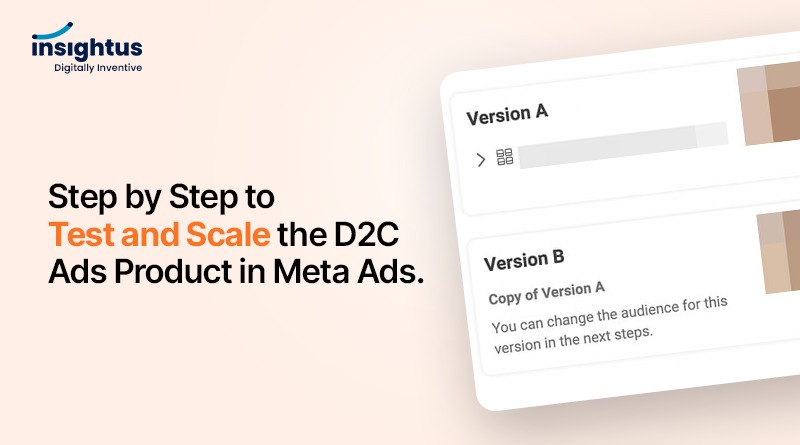
In this blog, we’ll take you step-by-step through the process of testing, scaling, and refining your D2C product ads using Meta Ads. By the end of this guide, you’ll have a clear understanding of how to run successful ad campaigns that not only bring in customers but also scale efficiently to drive long-term growth for your brand. We’ll cover everything from setting up initial test campaigns, analyzing the results, and making the right adjustments, to scaling up your campaigns without losing performance.
Preparing for Your Meta Ads Campaign
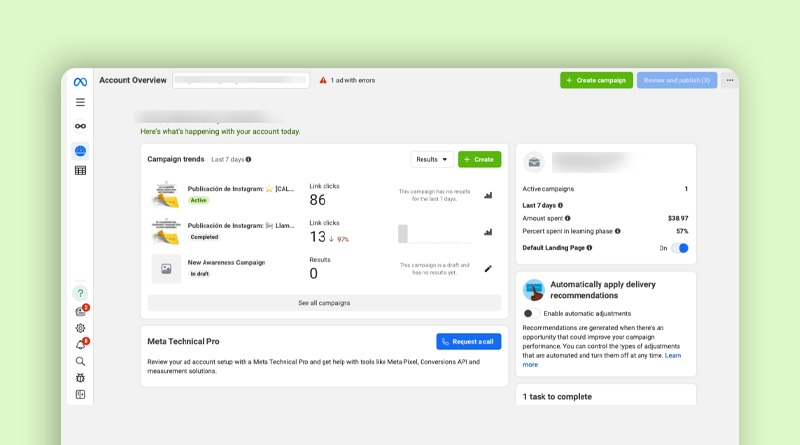
Defining Clear Objectives
Before you start running ads, it’s essential to clearly define your goals. This helps ensure that you’re focusing on the right metrics and strategies to achieve success. Let’s break down the most common goals for D2C businesses.
If your goal is to get people to make a purchase or take a specific action, then you’re focusing on conversions. This is where you optimize for actions like adding products to the cart or completing a purchase. For example, if you’re selling a new fitness product, you might want to drive direct sales by focusing on a campaign that encourages people to buy now.
Setting KPIs for Success:
ROAS (Return on Ad Spend): This is the amount of revenue you generate for every dollar spent on ads. A common target for D2C businesses is a ROAS of 4:1, meaning for every $1 spent on ads, you want to earn $4 in revenue.
CPA (Cost Per Acquisition): This tells you how much it costs to acquire one customer. For example, if you’re selling a product for $50 and your CPA is $10, that means it costs you $10 to get someone to buy your product.
CTR (Click-Through Rate): This is the percentage of people who click on your ad after seeing it. A higher CTR means your ad is engaging. For example, if 100 people see your ad and 5 click on it, your CTR is 5%.
Tip: Make sure your campaign objectives match your business goals. If you aim to generate sales, focus on conversions. If you’re looking to expand your audience, go for brand awareness.
Audience Research and Targeting
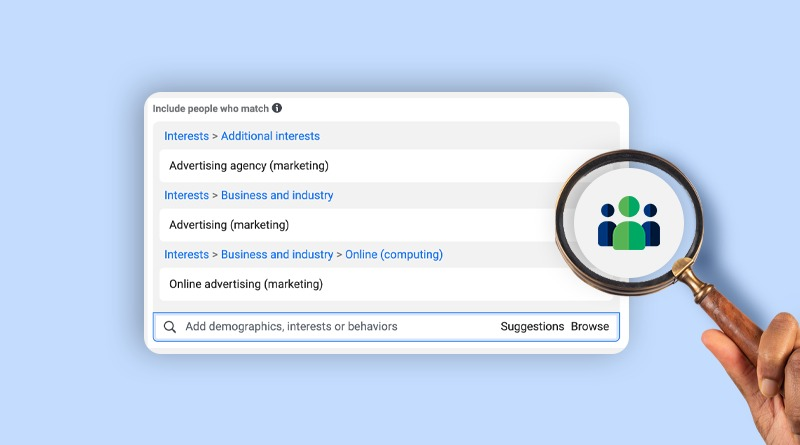
The heart of a successful Meta Ads campaign lies in targeting the right audience. Knowing who your customers are, where they are, and what interests them allows you to create highly effective ads.
Product Positioning and Ad Creative
When creating ads, you want your product to stand out and speak to the needs and desires of your target audience. The key is aligning your product messaging with the customer’s pain points and crafting an ad that resonates with them.
- How to Align Product Messaging with Customer Pain Points:
- Think about the problems your target audience faces and how your product solves them. For example, if you’re selling a sleep aid product, you might focus on customers who struggle with falling asleep or staying asleep. Your messaging could be, “Tired of sleepless nights? Our natural sleep aid helps you fall asleep faster and wake up refreshed.”
- Focus on benefits over features. Show how your product will make life easier or better. If you sell a subscription box for healthy snacks, focus on the convenience and health benefits rather than just listing the snacks inside.
- Best Practices for Ad Creatives: Images, Videos, Carousels, and Collection Ads:
- Images: High-quality, clean images that show the product in use tend to work well. For example, if you sell activewear, showing someone wearing it while exercising is a great way to convey both functionality and style.
- Videos: Short, engaging videos can tell your story and show your product in action. A 15-second video demonstrating how your product solves a problem can capture attention more effectively than static images.
- Carousels: Carousel ads allow you to showcase multiple products or features in a single ad. For example, a beauty brand could use a carousel to highlight different shades of foundation or skincare products.
- Collection Ads: These allow you to combine a video or image with a collection of products, making it easy for users to browse and shop directly from the ad. This is especially useful for fashion or home goods brands.
- Crafting Compelling Ad Copy That Drives Action:
- Your ad copy should speak directly to your audience’s emotions and prompt them to take action. For example, for a skincare brand, you might use copy like, “Say goodbye to dry skin – Try our hydrating serum and see the difference today!”
- Always include a clear Call to Action (CTA), such as “Shop Now,” “Learn More,” or “Get Your Free Trial.”
Analyzing Test Results
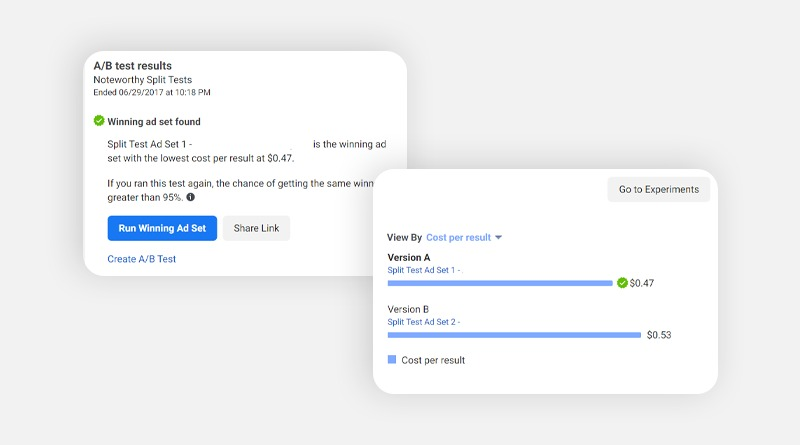
The first step in monitoring your test campaigns is to understand the key metrics that indicate whether your ads are performing well or not. Here are the main metrics to focus on:
- CTR (Click-Through Rate)
- What it is: CTR measures how many people clicked on your ad after seeing it.
- Why it matters: A high CTR shows that your ad is relevant and engaging to your target audience. If the CTR is low, it might mean that your creative isn’t resonating with your audience or your targeting needs refining.
- Example: Let’s say you run an ad for a new skincare product targeting women aged 25-45. If your CTR is 1% or higher, it suggests that your ad copy and image are attractive to your audience. But if it’s under 0.5%, you might need to tweak your creative to make it more engaging.
- Conversion Rate
- What it is: The percentage of people who clicked on your ad and then took the desired action (e.g., purchased, signed up, etc.).
- Why it matters: A high conversion rate means your ad is not only attracting clicks but also convincing people to act. If your conversion rate is low, the issue might lie with the landing page or offer, not just the ad.
- Example: If your ad for a subscription box service gets 200 clicks but only 2 conversions, your conversion rate is 1%. You may need to improve your landing page or offer to encourage more people to complete the action.
- Cost per Conversion (CPC)
- What it is: The average cost you pay for each conversion (sale, sign-up, etc.).
- Why it matters: A lower CPC means you’re efficiently converting leads into customers at a cost-effective rate. If CPC is high, consider refining your targeting or optimizing your creatives to reduce costs.
- Example: If your CPC is $10 per sale, but your profit per sale is $20, you’re in a good place. However, if your CPC rises to $30, it might be time to adjust your strategy.
- ROAS (Return on Ad Spend)
- What it is: The amount of revenue you earn for every dollar spent on ads.
- Why it matters: ROAS is the ultimate measure of your ad campaign’s profitability. For most businesses, a ROAS of 3:1 (three dollars earned for every dollar spent) is a good starting point.
- Example: If you spend $100 on ads and generate $300 in sales, your ROAS is 3:1. If it drops to 1:1, it’s a sign that your ad strategy needs refinement.
- Understanding the Learning Phase
- When you launch a new campaign, Meta Ads go through a “learning phase,” where the system is trying to figure out who responds best to your ad. During this phase, performance can fluctuate, and results may not be stable.
- Why it matters: If you scale too soon, you risk wasting ad spend on an unoptimized campaign. It’s important to let the learning phase run its course before making drastic changes or scaling.
- Example: Suppose you launch a campaign and notice that your ROAS is inconsistent during the first 3-7 days. This is likely because your campaign is still learning who is most likely to convert. Allowing the campaign to finish this phase will give you a better picture of its true performance.
Scaling Your Campaigns
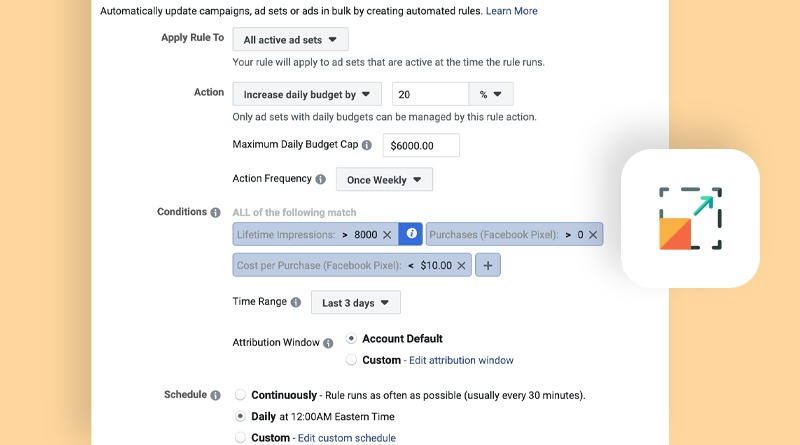
When to Scale
Identifying the Right Moment to Scale
Before you start increasing budgets or expanding your reach, it’s crucial to ensure that your ads are performing well. Scaling at the wrong time can lead to wasted ad spend and lower returns. Here are the signs that you’re ready to scale:
- Stable KPIs: Your campaign should have steady Key Performance Indicators (KPIs), such as a consistent CTR (Click-Through Rate), a healthy Conversion Rate, and a Cost per Acquisition (CPA) that’s within your target range.
- Consistent ROAS: Return on Ad Spend (ROAS) should be consistent, indicating that your ads are effectively generating revenue. If your ROAS has been steady for several days, it’s a good indicator that scaling could be beneficial.
- No Major Drops in Performance: If your ads are still performing well without any significant fluctuations in key metrics, it’s a good time to consider scaling.
Example: Imagine you’re running a D2C skincare brand campaign, and after running your ads for a week, you notice that your CTR is steady at 2%, your conversion rate is 4%, and your ROAS is consistently 3:1. These stable metrics are a good sign that scaling is safe and could increase overall revenue.
The Importance of Scaling with Caution
Scaling too quickly can overwhelm your campaign. It’s important to increase your budget gradually to maintain the same performance levels. If you scale too fast, your ads could start showing to new audiences who may not convert as well, leading to wasted ad spend.
Example: Instead of doubling your ad spend in one go, consider increasing it by 20% every 2-3 days. This way, Meta’s algorithm has time to adjust and continue optimizing the performance.
Scaling Budget
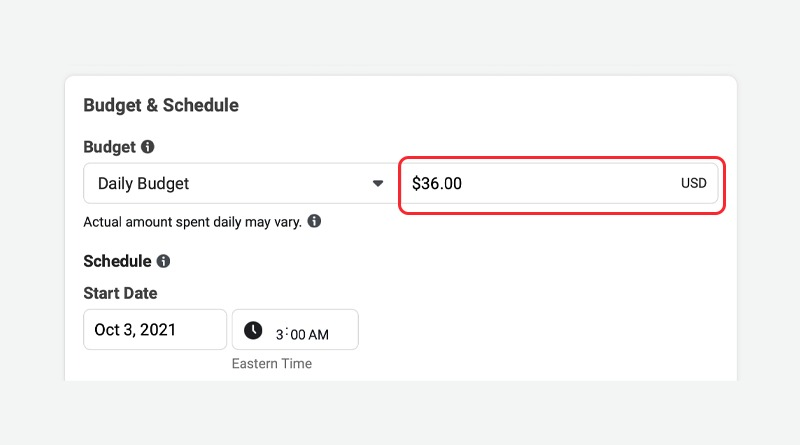
How to Scale Budgets Effectively
When you’re ready to scale, it’s best to increase your budget gradually. A 10-20% increase every 2-3 days is ideal for maintaining the efficiency of your ads.
Example: Let’s say you’ve been running a campaign with a daily budget of $50. After several days of stable performance, you can increase it to $55 (10%) or $60 (20%). This small change gives Meta’s algorithm time to optimize for the increased spend.
Exploring Campaign Budget Optimization (CBO) vs. Ad Set Budget Optimization (ABO)
- Campaign Budget Optimization (CBO): Meta optimizes the budget across all your ad sets. This works well if you want to give Meta more control over distributing the budget based on which ad sets perform best.
- Ad Set Budget Optimization (ABO): You control the budget at the ad set level. This can be useful when you have specific targeting criteria or want to prioritize certain audiences.
Example: If you’re running a campaign with multiple ad sets targeting different age groups, CBO would allow Meta to shift more budget to the ad sets performing well, while ABO gives you control to spend more on certain age groups or regions.
Importance of Re-evaluating Audiences and Creatives When Scaling
As you scale, it’s essential to revisit your audiences and creatives. What worked at a smaller budget may not work when you expand your reach. Testing new audience segments and updating ad creatives will help avoid ad fatigue and maintain engagement.
Example: If your current campaign is targeting a specific interest (e.g., “organic skincare”), try expanding to a broader interest like “natural beauty” or even “eco-friendly products” when scaling. Additionally, you may want to test new ad formats, like switching from static images to video ads.
Advanced Scaling Strategies
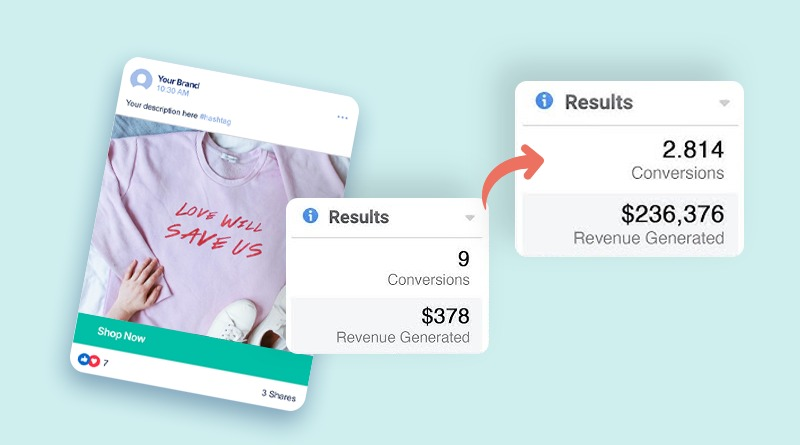
Lookalike Audience Expansion
Lookalike Audiences are one of the most powerful tools in Meta Ads to scale your campaigns. These audiences allow you to reach new people who share similar characteristics with your best-performing customers. Let’s dive into how to create and test these audiences effectively.
How to Create and Test New Lookalike Audiences (1%, 2%, 5%, etc.)
Lookalike Audiences are created based on an existing Custom Audience, such as your website visitors, current customers, or engagement on your social media. The percentage in Lookalike Audiences represents how closely your new audience matches your existing one:
- 1% Lookalike Audience: This group consists of the top 1% of people most similar to your existing customers. It’s the highest match, but also the smallest audience.
- 2% Lookalike Audience: This group is slightly broader, including the next 1% of people, and may offer more volume while still being closely aligned with your original audience.
- 5% Lookalike Audience: This group has a broader reach (5% of the population in a specific region), and while it’s still effective, the relevance may decrease slightly.
Example:
If you have an e-commerce store selling premium skincare products, you can create a 1% Lookalike Audience based on your best customers who have spent more than INR 5000. If you want to reach more potential buyers, you can test 2% or 5% Lookalikes to expand your reach while still maintaining a level of relevance to your existing customer base.
Troubleshooting and Refining Your Ads
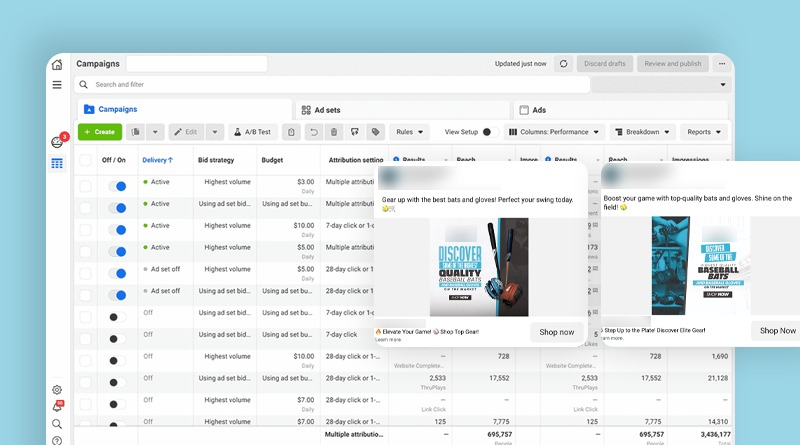
As you scale your D2C product ads on Meta, you might encounter certain challenges. These issues can affect the performance of your ads, making it crucial to troubleshoot and refine your strategies to maintain a strong return on ad spend (ROAS). In this section, we’ll discuss how to handle ad fatigue and decreased ROAS, offering simple strategies to get back on track.
Dealing with Ad Fatigue
Ad fatigue occurs when your target audience has seen your ads too many times, leading to decreased engagement and performance. Recognizing the signs of ad fatigue and taking action early is essential to avoid wasting ad spend.
- Recognizing Signs of Ad Fatigue (CTR Drops, Higher CPM)
- What’s happening: When your Click-Through Rate (CTR) drops and Cost Per Thousand Impressions (CPM) rises, it’s usually a sign that your ads are becoming stale.
- Why it happens: Your audience has seen the same ad repeatedly, leading to less interest and engagement. As a result, Meta’s algorithm increases the cost to show your ad to more people, but it’s less effective.
Example: Imagine you’re running a Facebook ad campaign for a new pair of sneakers, and after two weeks, your CTR has dropped from 3% to 0.8%, and your CPM has doubled. This suggests that the audience has become tired of seeing the same ad, and it’s no longer performing as well.
How to solve it:
- Refresh your creatives: Use new images, videos, or carousel ads to keep things fresh. For instance, if you were showing close-up shots of the sneakers, try showing people wearing them in different environments (e.g., gym, park).
- Test new angles: Change your messaging. If you were focusing on “comfort,” switch to highlighting “style” or “durability.”

